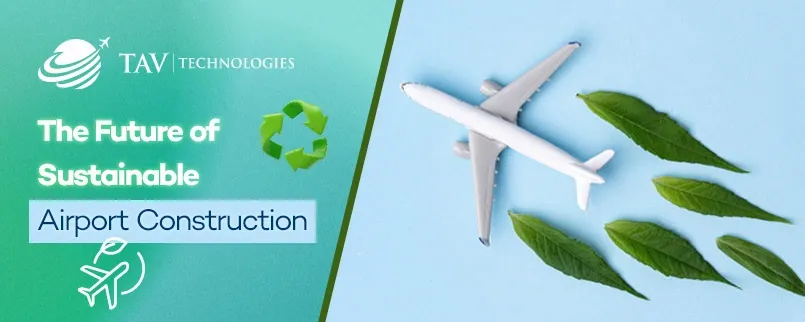
Mar 2024
In airport infrastructure, the pursuit of sustainability has become a driving force for positive change. As seasoned professionals in the aviation industry, we understand the importance of embracing greener practices in airport construction and design. Let's explore the innovative and sustainable approaches shaping the future of airports.
The Rise of Eco-Friendly Materials
As technology advances, so do the options of eco-friendly materials available for airport construction. From recycled steel and glass to bio-based composites, airports opt for materials that reduce environmental impact and enhance structural integrity. Examples include using bamboo for flooring and sustainable concrete made from recycled aggregates.
Energy-Efficient Design and Sustainable Landscaping
Airport professionals are increasingly turning to energy-efficient designs to minimize the ecological footprint of aviation infrastructure. Integrating solar panels into terminal roofs, implementing intelligent lighting systems, and utilizing passive design principles are ways airports optimize energy consumption. Consider these examples: Changi Airport's Terminal 4 in Singapore harnesses natural light and ventilation to reduce reliance on artificial sources. Norway's Oslo Airport takes a pragmatic approach to combat the harsh Nordic winters. The airport employs biomass heating systems, utilizing organic materials for warmth. This sustainable heating solution not only ensures a comfortable environment for passengers but also showcases the potential of renewable energy in colder climates.
Imagine airport terminals adorned with greenery and gardens. Green roofs not only add a touch of natural beauty but also provide insulation, reduce urban heat island effects, and promote biodiversity. Copenhagen Airport's Green Hub is a good example, incorporating sustainable landscaping to create a harmonious balance between nature and aviation infrastructure.
Waste Reduction Initiatives Led by Technology
Sustainable airport construction isn't just about the initial build; it extends to ongoing operations. Airports worldwide are implementing waste reduction initiatives, from recycling programs to minimizing single-use plastics. Technology systems used by airports directly contribute to the war against waste reduction. Technology allows airports to monitor waste generation in real time and analyze data to identify patterns and trends. This data-driven approach enables airports to optimize waste management strategies, identify areas for improvement, and implement targeted solutions. The move towards paperless operations is significant in reducing unnecessary waste. Digital platforms for ticketing, boarding passes, and other documentation streamline processes and eliminate the need for vast amounts of paper. This shift towards a paperless environment aligns with environmental conservation efforts.
In a groundbreaking move towards sustainability, TAV Technologies introduces Smart FIDS – an environmentally conscious solution that revolutionizes the airport environment. By embracing clientless technology, this innovation eliminates the need for Mini PCs behind each monitor, unlocking eco-friendly benefits for airports globally. Smart FIDS marks a significant departure from traditional systems by minimizing energy consumption. The removal of Mini PCs substantially reduces the overall power demand. Airports can now operate more efficiently, contributing to a considerable decrease in energy usage. It also introduces a sustainable approach to technology deployment by removing the need for individual Mini PCs. This not only simplifies the system but also results in a significant reduction in electronic waste.
Sustainable Aviation for the Future
Our choices today in construction and design have a lasting impact on the environmental legacy. Embracing eco-friendly materials, energy-efficient designs, green roofs, and waste reduction initiatives pave the way for airports that meet today's needs and respect tomorrow's needs.
